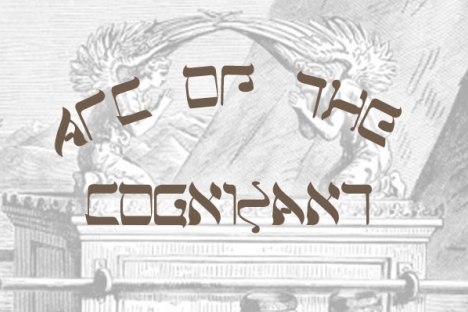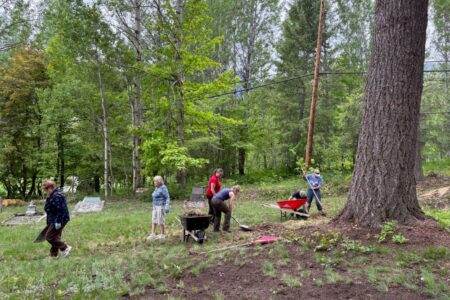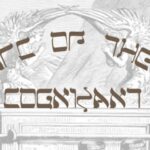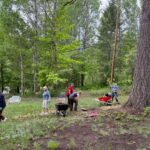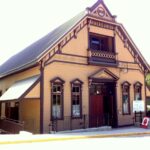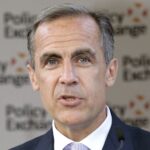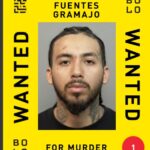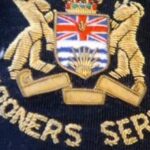Column: Storytelling by Elders
This column is a necessary sequel to my October Arc on the role Elders play in telling stories from History. I will tell a story from ‘my People’ of my People, for all readers, not only for my People. Here I attempt to be a ‘knowledge-keeper.’
The Story: Celts in Ireland encounter Normans from England; the war.
Last column, I noted that among aboriginal peoples of Canada, Elders are knowledge-keepers about the Past. As I suggested to my age-peers, telling stories from History is worth the effort taken to learn it and to know History in order to know the story. Today, I offer an example of story-telling.
I am following the advice I gave Elders of our colonists’ culture; I’m attempting to tell an interesting story about my Folk, a people called Celts, in medieval Europe. The story has some meaning for people from the British Isles, I think. It also has meaning for colonists’ descendants in Canada, and for natives. It is a tale of two orders in human lives, meeting, misunderstanding, and warring.
My Folk, among Europeans, were North-western people. (See Appendix Three).
Peoples strange and unknown to one another are not bound to fight, but when they do, the war is the more fierce when the sides see one another as “weird” –extremely alien. As the natives of Canada found Europeans, and vice versa, so do the actors in this tale find one another peculiar, outrageous, and inferior.
The conflict is visceral. It is framed as “We, the good, fight Them, the awful.”
On one side, the Irish Celts, on the other, Normans from England, Wales, and Normandy (France); it could as easily be about aboriginals and Europeans.
The Holy Isle invaded: Ireland, England, France, and the Roman Church
Ireland, known to the Romans in their empire as “Hibernia” [Latin, ‘winter’] is highly unusual in this fact – the Romans decided not to bring the island into the Roman Empire, although it was so close to Britannia, a province Rome ruled from 43 AD to 410 AD. The Roman Catholic Church, with its spiritual emperor titled “Pope”, did however bring Ireland into the Christian empire. Celtic Christianity was different from Roman; Irish Christian missionaries evangelized among pagan Germanic settlers in the Roman empire’s ruins.
Eventually, by the 12th century, ‘mainstream’ Christians outside Ireland viewed the Irish as benighted for the odd way they practiced Christianity, and this strangeness of the Irish was one original root for why an “English” king, who spoke French (and spent much time ruling his inherited empire in north and west France), went to Ireland. His name was Henry, second king of that name to rule England, a century after the Norman Conquest. He was by ethnicity an “Angevin”: his father ruled Anjou, a land near Normandy.
Henry inherited Anjou, Normandy, and England from his parents – his mother was heir to King Henry I – and he married to become Duke over Aquitaine, a large, rich land in France. Thus, before his Irish project, Henry II was already well-loaded with lands, but in 1155 A.D. the pope encouraged him to go also to be lord of Ireland and “reform the Irish church to conform with Roman ways.” Henry put off this mission for 15 years. When he went to Ireland, it was with a very large “modern” army, ready to capture walled towns, win major battles, or devastate land. Ireland’s primitive forces never offered battle against this army.
Three other high-born men are at the crux of this story: Rory O’Connor, the High King of Ireland; the King of Leinster, Diarmuid MacMurchada. [= Dermot McMurrough]; Richard FitzGilbert, a vassal of Henry with a great reputation as a warrior, having earned the nickname “Strongbow.” There are two women of note as well, both Irish: Dearbhforghaill [Devorgilla], and Aoibhe.[Eve].
Henry wins Irish Lordship playing Peace-Maker and pope’s Champion
Henry, an intelligent, driven sovereign by many accounts, put on the role of Peace-Maker in Ireland, coming to a land of war with papal authority to bring all noblemen under his lordship and enforce his order, his regal law, upon all the inhabitants of Ireland wherever his Norman warriors had conquered land.
Norman warriors were in Ireland from 1168 on, invited as paid mercenaries by Dermot. Dermot was at war with Rory, having insulted an ally of the ard ri by abducting his wife Dervorgilla; Rory saw Leinster’s king as too powerful and asserted his overlordship by invading. Dermot was losing the war, so went to Henry to ask for military aid; Henry was too busy to lead an invasion himself.
The English King gave Dermot a letter to show Henry’s warlords in England, proclaiming they would earn royal favour by fighting for Dermot, which they did so well that Dermot – and his greatest Norman ally Earl Richard FitzGilbert –– defeated the Irish twice, and then the Danes of Dublin (1171). A new power was rising in east Ireland, not so far from England’s coast. Henry had to act.
Dermot now knowingly deceived Strongbow about Celtic laws of succession for kings, promising the Earl he would be next “King of Leinster” by marrying Dermot’s only child, his daughter Aoife. Irish law codes did not allow female succession; any male eligible by royal blood had legal right to attempt to raise himself by battle to a vacant throne. The Earl in Dublin — imagining no doubt that he had reached the zenith of success by raising himself to a regal throne from obscure status as baron of minor territory on the frontier of Wales and England — told Normans in England, “Come, be my vassals, own Irish land.” In feudal society, possession of land was the acme of ambition; it ensured a man’s nobility.
Strongbow aims too high: a threatened king bows to his Overlord
Quelle erreur! What a mistake! King Henry learned of Strongbow’s assumption of a royal title – a Celtic king, not a feudal one, but still not a title that Henry could allow an underling – and immediately decreed: to all his subjects, no one must help this upstart warrior to hold power in Ireland under pain of Henry’s enmity. Richard was still “Henry’s sworn man;” his overlord was King of England, ruler of half of the land of France; Henry was enraged that a vassal under him dared to raise himself to an Irish kingship. Henry was “liege” over the earl. The Earl had promised land to anyone who would come to serve him.
No one disobeyed Henry in this: all the ports of England were closed to Strongbow; not a single weapon, warrior, or military supply was allowed to leave England. Naval commerce to Ireland ceased. Any warlord planning to go to Ireland to help ‘King’ Richard in Dublin now cancelled plans, to watch what Henry would do. Richard heard of Henry’s rage, left Ireland, and went to Henry, surrendering all conquests – Dublin, Leinster, its coasts – into Henry’s hands. The price of continuing as a baron was humbling himself to higher authority.
Now Henry came to Ireland with his army, equal to all challenges. He stayed a mere eight months, (October-May, 1171-72) enough time to decree papal religious reforms. Henry, the-Roman-Church-Champion! Henry, grantor-of-royal-peace! Conveniently, he needed to do a meritorious service for the pope. Since Henry had been the suspected cause of the murder of the Archbishop of Canterbury (1170), the pope was upset: reforming Ireland’s church put Henry back in papal favour; Ireland would be forced to Roman conformity, archaic irregular Celtic Christianity would fade. Dermot died months before Henry arrived late in 1171.
Warrior Folk Encounter: one shared cultural trait is the Love of Combat
Rory, ard ri, made peace with Henry who at first agreed that native law and the old order would continue, in all areas under ard ri [=high king] Rory O’Connor in his, western, half of the island. A Treaty was proclaimed, dividing Ireland. (1175 AD). Peace was not to be: the peoples, Celt and Norman, were disposed equally to a perspective that exalted combat and martial skill as a noble male’s highest purpose. (Religious ‘moral restraints’ on warriors? Illusory.) Dermot’s specialty after single combat was to decapitate his dead foe. This barbarism of collecting heads was much remarked and despised by Normans, ‘civilized’ knights against Celtic natives, and used to justify more confiscation of land.
Over Henry’s many lands, men whose only asset was knightly status, warrior skill, and arms they possessed, understood that Ireland was “sword-land” – i.e. land where conquest was legal title. Land, in feudalism, meant baronial power. The Irish Celts were temporarily completely outmatched on battlefields, and the French-speaking warlords who flocked to Ireland by the hundreds were quick to grab land from Celts they defeated, erect castles, and continue their fealty to ‘the Lord of Ireland,’ Henry, legitimately the highest power by the pope’s say-so.
In his brief time in Ireland, the English king – who spoke no English, only French, for English was the language of the conquered, the Anglo-Saxons conquered by the Normans a century before – fought not a single battle. The Irish, the Celtic ri-tuatha [tribal kings] submitted to him in rituals of vassalage – which meant nothing outside a feudal legal system. Rory, a feeble ard ri, recognized Henry as Lord over the eastern “half;” the division from north to south was not made precise. By their Treaty of 1175, Rory’s half was to be secure from invasion by Normans; they invaded the West despite this pact.
Peace with Dishonour: Henry and his vassals violate the Treaty
Aggressive land-hungry Normans set about appropriating land from the native Celts through warfare; Lord Henry dishonoured his Treaty with Rory, not restraining his men who conquered western lands officially belonging to the High King’s realm. In 1177, Henry unilaterally decreed the Treaty null.
In 1185, a Pope delivered Henry a crown for Ireland; Henry sent teen-aged son John, (the ‘bad king John’ of England who notoriously later fought his barons and granted Magna Carta), to become King of Ireland. Prince John was so very offensive, upset so many lords both Norman and Celt, that the project for a united kingdom of Ireland, separated from England, never materialized.
The Lordship continued, but Celtic ri increasingly defied it, rejecting assimilation. Celtic natives and invading Normans pursued endemic border warfare, with individual warriors from each side willing to fight for the “ethnic” enemy at any time it seemed selfishly profitable.
Over generations, feudal (colonial) incomers discovered much about the Celtic way that was attractive – so much so that Normans took on Irish ways (“Hibernicized”) — easily adopting features of Celtic culture (e.g., clothing, music, food, religious practices, and notably, language) marrying into powerful native families as allies in constant wars. In England, ‘reverse assimilation’ was deplored; nevertheless, it lasted. A “middle nation” of people — neither entirely native nor Anglo-Norman — came to be identified after a century by both sides, folk preferring to be known to themselves as “English born-in-Ireland”.
The King of England looked to Europe as the beacon of Christian civilization, ignoring Irish subjects. England’s King Edward I (John’s grandson) invaded Scotland, milking Ireland of many resources and men in order to fight Scotland. Ireland’s colonists began leaving for England. Eventually, Ireland as a lordship of the English king, dwindled, and Celtic lords reasserted their independence. (A complete conquest and dispossession of Irish land by English did not happen until 1658 A.D. England was then temporarily a republic with a military regime under Cromwell; the ‘Modern State’ was born there. Ireland’s medieval-age polity disintegrated; English power ascended.)
Conclusions: a history, a story, and clues to human behaviour
I remarked at the outset that I want Elders of the Euro-Canadian culture to be more like the Elders of the natives in Canada, and tell stories from our History. (I made the point in detail in the last Arc.) Now I will attempt to summarize why the story I just related might serve as an example of such story-telling.
First, the story is well-documented in scholarly historical writing, and the two main medieval sources for it are reliable and contemporary. (see Appendix One)
Second, this story as I tell it is easily made one’s ‘very own story’ by a little further research of details I omit, or it can be shortened. Whatever you like, be sure to practice oral telling of this tale. This is Elder as “knowledge-keeper.”
Third, the specific details of this story have a universal human application, as a character study of two peoples displaying xenophobia and prejudice, unable to live peacefully on the same land when both want to possess it. The story of natives and Europeans in the New World, of Israeli Jews and Arab Muslims in the former “holy land,” of European settlers in Africa and Asia, is all here in miniature. The story of the Norman invasion of Ireland is paradigmatic. Not to say humans cannot live in peace across the abyss of deep cultural difference, but surely we can agree that obstacles are endemic. Compassion must evolve.
————————————————————————————————
I hope my Euro-Canadian readers, the Elders at least, will take up my challenge and find their own stories from History to make their own, and pass on in oral form.
And if you have your own path to establishing the value and contribution of ‘old age’ in this post-modern human world – ways to raise the status of ageing in our culture – please pursue it. Write to me here with details. We have to help one another, Elders, in a landscape of changes none of us ever foresaw.
https://www.storytellers-conteurs.ca/en/local-groups/British-Columbia/Nelson-Storytelling-Guild.html
______________________________________________________________________________
Appendix
Introduction: reflections upon my lifelong passion
These three short quotations make three vital points about History, the discipline I have studied all my adult life.
“The past actually happened but History is only what someone wrote down.” – A. Whitney Brown
“If you don’t know History, you don’t know anything. You are a leaf that does not know it is part of a tree.”
– Michael Crichton
“History is a cyclic poem written by time upon the memories of man.” – Percy Bysshe Shelley
First, the past is the reality. History is the human product of the past, what humans say, and think, and otherwise communicate about the past. It is in its very nature to tell only a relative truth, not an absolute truth.
And from that it follows that History is like all human products, subject to being changed, subjected to the will of powerful humans in the present.
Second, our species needs connection to others of our kind, and needs to feel belonging. History lets us know the tree we are part of. We belong to a species with the miraculous gift of consciousness. Mind and Past are leaf and root.
Last, memories play a huge part in what humans call History. If it seems to be a cycle, that is because, like poetry, the past is easier to commit to memory when we impose order upon it, with rhyme, repetition, pattern, artifice… and falsity.
One
Some lines from the medieval French epic about Dermot and Earl Strongbow:
Dermot, the potent king,
Had subdued his country,
Had defeated and discomfited
Most of his enemies ;
Through the English he was exalted
With great pride and haughtiness.
By the advice of his people
He wished to retain, as I hear,
The soldiers of Maurice, the baron,
According to the geste that we are reading.
This man departed from King Dermot;
Full two hundred he brought away with him :
Of the English, in truth,
Maurice brought away full two hundred.
Towards Wexford he set out, line 1070
He wished to cross the sea to Wales.
Then the king sent word
To Wexford by messenger:
All the master mariners
He made obstruct Maurice…
This is how Henry stopped all Norman warriors going to join Strongbow’s forces.
Two
Scholarly comments about Gerald of Wales, and the Normans invading Ireland.
https://earlymedievalhistoryblog.wordpress.com/2020/07/13/gerald-of-wales-and-the-irish-part-1/
Contrast of brehon (Celtic) and feudal (Norman) legal culture at the time of invasion. It is crucial to comprehending why the two peoples, sharing Christianity, viewed one another across a chasm of dislike. To each, the “Other” was radically too alien.
“The great peculiarity of the ancient laws of Ireland [is that] they are not a legislative structure, but the creation of a class of professional lawyers, the brehons, whose occupation became hereditary, and who on that ground have been designated, though not with strict accuracy, a caste. This view of the system scholars call the brehon law. It describes the legal rules embodied in texts as formed of the ‘law of nature’ and of the ‘law of the letter’. (The ‘law of the letter’ is the Scriptural law, extended by so much of Canon law as the primitive monastic Church of Ireland created or adopted.) What did not clash with the Word of God in the written law and the New Testament and theconsciences of believers, was confirmed in the laws of the Brehons by Patrick and by the ecclesiastics and chieftains of Ireland; for the law of nature had been quite right except the faith, and its obligations, and the harmony of the Church and people. And this is the “Senchus Mor”.(Great Knowledge)’ Among the Celtic Irish, the half-judicial,half-legislative, power originally possessed by the tribal Chief,or by the tribal Assembly, or by both in combination, passed very early to a special class of learned persons. The Prefaces in Irish found at the commencement of some of the law-tracts, which are of much interest, but of uncertain origin and date, contain several references to the order in Celtic society which has hitherto occupied men’s thoughts more than any other, the druids. The word druid occurs in the Irish text. We see by the story which begins the Senchus Mor that, even when a Saint is supposed to be present, the inspiration of which he is the source does not find expression through his lips, nor does it descend on the King; it descends on the professional judge. When we obtain our last glimpse of the class/caste which received this inheritance from Chief or King — the Brehons, Judges, or Authors of Judgments — they have sunk to the lowest depth of misery and degradation because of English conquest.” After 1550,England was modern, Ireland archaic. Lesson: Conquerors who colonize land pursue eradication of the native culture.
Three
Why I call the Irish, Welsh, English, French, and Normans, “my Folk.”
Everyone has a People from whom they inherit DNA. But culture is not genetic.
My mother was descended from a long line of Anglo-Saxons, the Good-alls or Good-ales. This is the indisputably Germanic half of me. Her mother was a Henderson, another Saxon line. The names go back deeply into the English past, before the Normans. The Goodalls lived in a part of dark-age England called the Danelaw, where Danes settled.
My father is the one who brings the mongrel mix into my bloodline; his mother’s maiden name was “Savage,” from Normandy. Normans were a mix of Danes and Franks. His mother’s father was descended from Norman warriors who settled in Ireland as far back as the 12th C. The Savages intermarried with Irish Celts. They called themselves ‘English- born- in-Ireland’ for many centuries. Eventually, the bloodline was more Celt than Saxon. They lived in a part of Ireland later heavily colonized by Scots: more Celts.
Mac an tSábhaisigh is how the Savage family name transformed into Irish after centuries.
My father’s father was a Jean[es]. (The name is, simply, John). My grandfather was a proud Englishman, but the “Jeanes” were not English very far back, coming from France to England in the 17th Century. Dad’s mother’s mother was a Jones, a Welsh woman. Another source of Celtic descent in my mixed-up ancestry.
So: Anglo-Franco-Celt will suffice. (It misses the Scandinavian bit of my roots, from Normandy’s Danish settlers in the 10th century, though.)
Thus, my ancestry is extremely mixed in the sense of a gene pool, and yet not so varied since all my people came from one part of the world, the British Isles, France, and Scandinavia. I am Anglo-Franco-Celt, I might say, if pushed to summarize.


